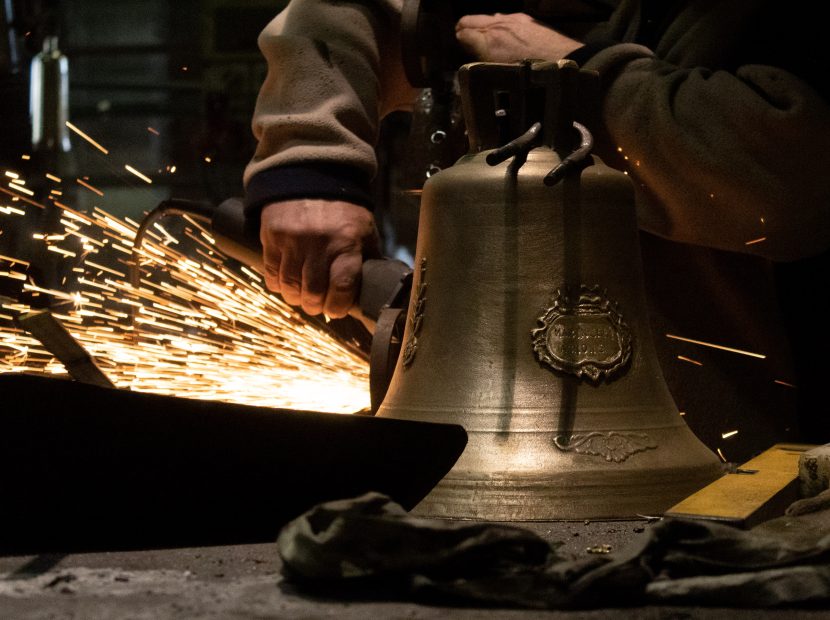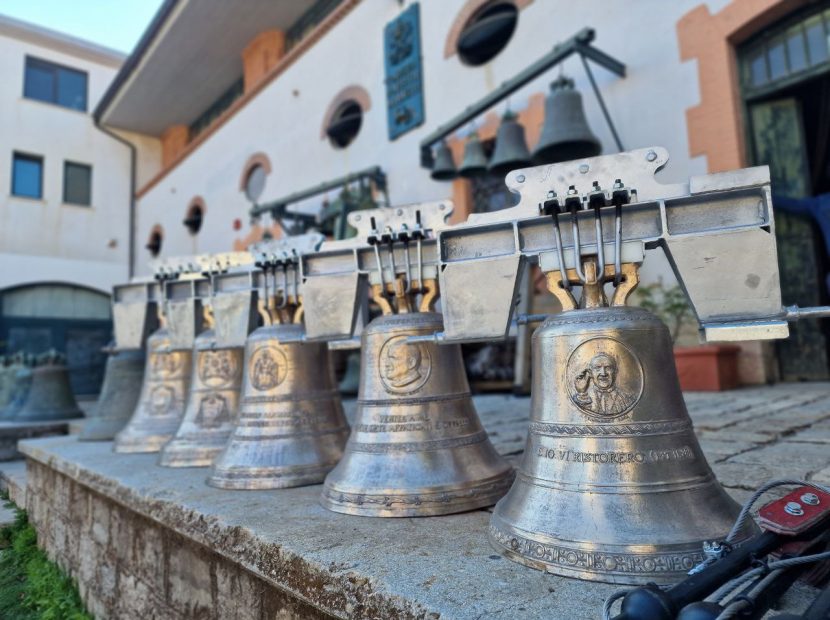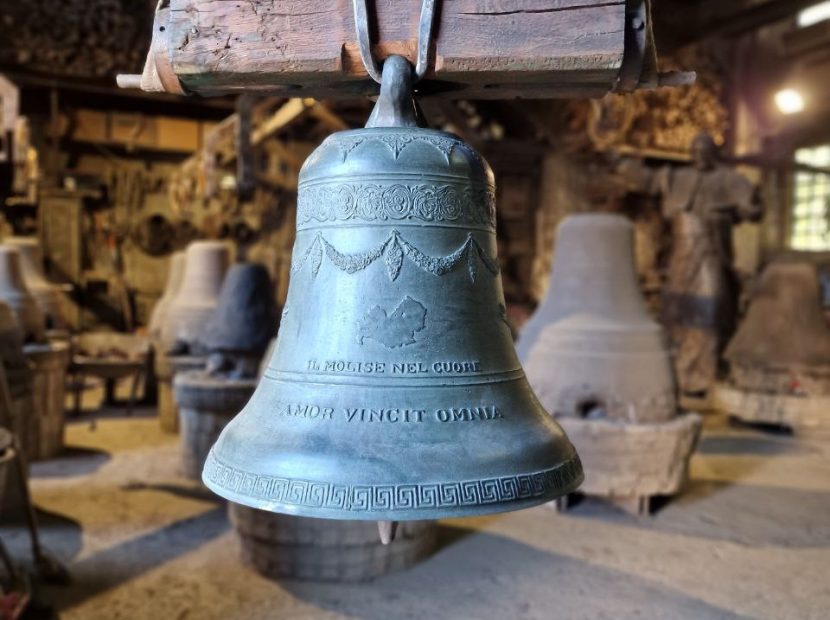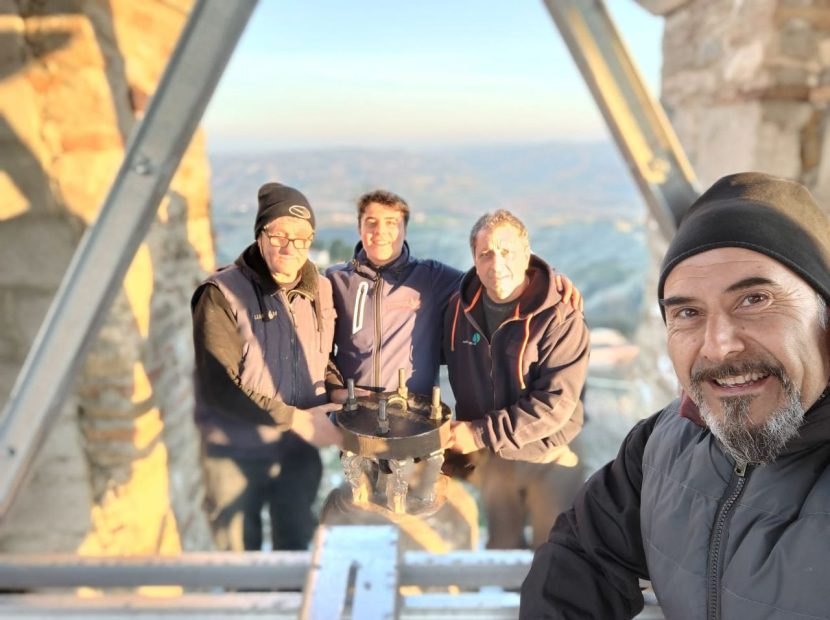Maintenance and replacement of parts and electrical systems
The Marinelli company provides ordinary and extraordinary maintenance on any bell installation system. All of our installations are guaranteed to ensure perfect functioning over time.
We are specialized in the construction and installation of everything relating to bells and bell accessories, both inside of bell towers and in other location.
These elements are essential to the sound of our bells
Clappers
The clapper is the most important accessory of the bell because it is mainly responsible for the acoustic performance and for preventing its wear. Each clapper is different and proportionate to its bell, which is why it must have precise physical, geometric and technical characteristics. After the bell has been cast, the clapper is attached to a crown staple placed strategically inside the bell, so that it “strikes” exclusively at the point where the bell is thickest. Even the clapper is a small work of art, made according to strict rules of expert craftsmanship. To protect the bell from breakage due to percussion, the clapper is forged in iron, which, while a heavy metal, is softer than bronze. The Marinelli company guarantees safety by equipping all clappers with a fall arrest cable which prevents them from falling to the ground in the event of accidental detachment.
Wooden headstocks
Bells are idiophone percussion instruments that produce sound by being struck. They are structured to be suspended, so that the large opening at the bottom allows propagation of the note tolled. They are attached to a load-bearing structure (bell towers or other structures) via headstocks. In newer installations, these allow the bells to be oscillated by means of electrically automated systems, as the traditional way of ringing bells by means of “pulling strings by hand”, is now almost completely relegated to folklore or concert events. The headstock can have different shapes and characteristics depending on the intended use, traditions and the type of sound desired. Sometimes, a wooden headstock is required for aesthetic reasons or as imposed by authorities for preservation of heritage buildings. The Marinelli foundry supplies these high-quality elements, lathed from top grade wood which ensures maximum durability.
Iron headstocks
The Marinelli foundry also supplies metal headstocks to fulfil any requirement, taking the utmost care to combine technical excellence with aesthetics so as to respect the architectural context. Iron headstocks are forged with traditional artisan techniques while also using lighter, modern metal systems to hide computerized mechanisms for automated tolling.
Electrical systems
The Marinelli foundry installs technological systems for the electrical automation of new generation bells. These include a display screen and the capacity to manage up to 88 outputs for controlling bells, tower clocks and lighting, and the memory can hold up to 1000 ringing patterns.
The programming is simple and guided, and includes manual controls for direct strikes and rotations of 6 bells.
Wooden frames and metal frames
In a belfry, the structure holding the bells is commonly called a “frame”. The frame fulfils the fundamental role of supporting not only the weight of the bells and all the parts that move them, but most importantly it supports the forces produced when the bells oscillate. Each bell tower is a unique creation, custom made according to the number and size of the bells mounted in it. For centuries, up until the 1950s, these frames were made up of an arrangement of wooden beams that supported the bells, leaving them to oscillate freely on their rotation axis. At the beginning of the 20th century these structures were replaced by metal frames.
The new frames are designed based on the dimensions of the belfry, and on the history, characteristics and architectural style of the bell tower. When carrying out restoration works on heritage structures, the Marinelli foundry provides specialized carpenters for the creation of wooden frames compatible with the pre-existing ones.
New frames are designed according to the dimensions of the space available, using self-supporting steel beams that are separated from the supporting structure by shock-absorbing anti-vibration systems.



